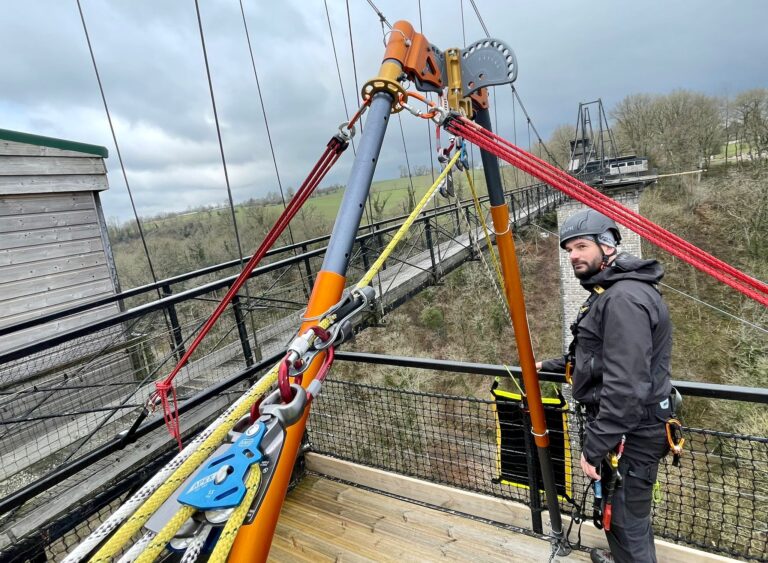Sideways Easel A-Frame Resultant Insight
(Taken from our A Guide to Artificial High Directionals & Two Tension Rope Systems online course… )
We’ve added this compression member with a tension element added to it. The reason we did this is because we previously had to keep our resultant between our two legs. As you’ll see in the next video, once we added this member to the pole, we opened up the space below us as a space for the resultants to land.
With this new setup, we’re also moving the load a little differently. We wanted some extra room to work with and this is also a great example of how tension and compression work. We’ve got them both here in this element.
The leg that we’ve got is in compression. It won’t allow the top of the tripod to pull or push against the post and move. The tension element is doing just the opposite; it’s holding it in place and doesn’t allow it to pull out in the other direction.

The reason we’ve done this in two elements is that we have compression and tension. Just because we have a lash that’s holding everything in place doesn’t mean that it’s also providing tension. They’re not designed for the legs to be held in tension, they’re designed for the legs to be held in compression. It’s all about adding tension and maintaining compression.
On the TerrAdaptor, you’ll notice when you work with them and you wiggle them, there’s a little bit of rattle you don’t see in some other devices. That rattle is normal. This piece of equipment is designed with a little bit of extra tolerance in how the legs go together, so while it may sound loose, the leg is still very much in compression.
- CMC MPD
- Petzl Axis 11mm Rope
- TerrAdaptor (Artificial High Directional) Portable Anchor System
- Cascade Rescue Professional Series Stainless Tapered Litter
- Petzl Jag System
- Petzl AVAO BOD Full Body Harness
- Petzl Am’D Carabiner
- Petzl RESCUE Pulley
- Rock Exotica Omni-Block 1.1″ Single
- Rock Exotica Omni-Block 1.5″
- SMC Apex Swivel Pulley
For More on this … A Guide to Artificial High Directionals & Two Tension Rope Systems
Peace on your Days
Lance








